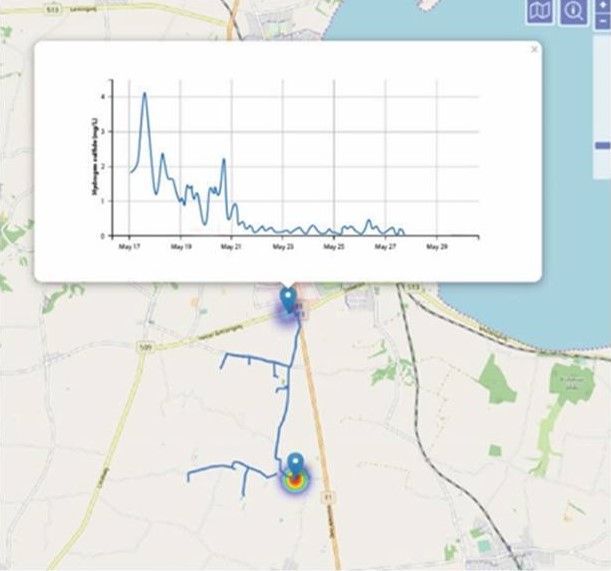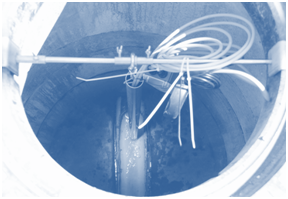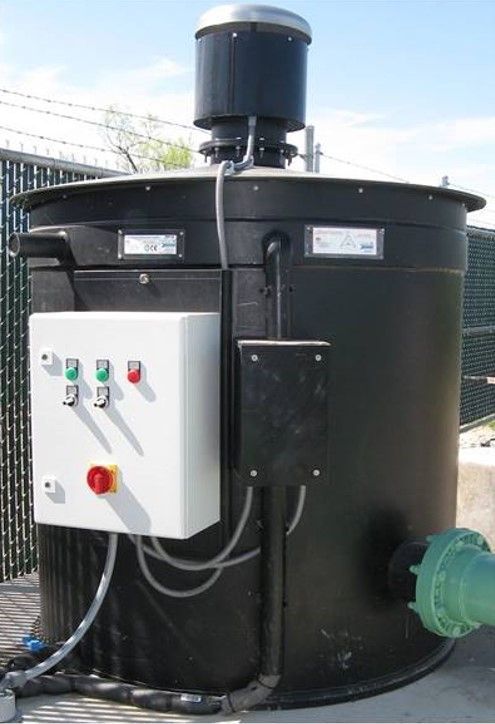SANITATION NETWORKS
Application of sensors for the measurement of the levels of H2S dissolved in waste water or in the gaseous phase, in order to determine the levels in internal parts of sanitation networks. Maps of H2S in sanitation networks
Control of H2S levels is essential in order to ensure the safety of the personnel working inside the sanitation networks, and also to minimize both possible odor problems and the costs associated with corrosion.
This control can be carried out both in the gaseous phase of pumping stations, sewers, ..., and, with greater accuracy, in the dissolved phase of waste water.
The information obtained is transmitted directly to Scada systems and also to "on-line" visualization applications, and allows an efficient control of the dosing of the reagents used for eliminating the H2S, thus achieving considerable economic savings.

"On-line" representation of dissolved H2S levels in pumping stations

Continuous measurement of the levels of H2S dissolved in waste water

Simulation of H2S levels in the indoor air of sanitation networks

Registration and validation of odor complaints from sanitation networks
Simulations of H2S and odor levels inside sanitation networks and their emissions
There are several empirical predictive models (more or less complex) that can be applied to predict the formation of H2S in black or gray water circuits or, alternatively, to predict the corresponding risk.
The application of this type of model is useful for, among other applications:
- Finding possible hot spots
- The design of treatment units
- The estimation of the dosage of reagents and their consumption regime
It is also possible to simulate the odor impact of the sanitation network and/or manage the complaints of the affected population.
Odor / H2S treatment systems attachable to manholes, sewer registers and pumping stations
Different alternatives can be offered to ventilate and treat the interior spaces of sanitation networks that cause odor problems for neighbors.
The technologies available in compact equipment models are:
- Activated charcoal filtration
- Biofiltration
- UV and/or photocatalytic oxidation

Biofilter treating the indoor air ventilation of a pumping station




